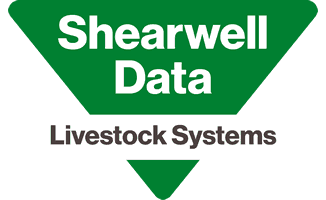FAQ
Got a question? Not sure what to do, how to do it or even why to do it? Take a look below and if you still can't find the answer, please just get in touch by mail [email protected] or call us on 1800 998 934.
The tagging procedure is very important both for the welfare of the animal and for tag retention.
We send a leaflet out with every applicator (reproduced here):
We send a leaflet out with every applicator (reproduced here):
None. RFID stands for Radio Frequency Identification while EID stands for Electronic Identification. Both terms are used widely, but some people tend to use EID to refer to the unique ID number of the animal and RFID to refer to the technology.
A tag bucket file is a text file that we can email to you for the EID tags you've bought from us. It links the unique number programmed into each electronic tag to the number printed on the tag. This allows devices like stick readers and weigh scales to display the same text as is printed on the animal's tag when its ear tag is read electronically. The format is usual CSV. This just means that each value is separated from the next by a comma (comma separated variables). You can open the file in a text editor or in a spreadsheet application as well as using it to configure your stick reader or weigh scales.
Below is an example of a tag bucket file containing 4 tags. This file is for management tags so the NLSID column is empty.
Below is an example of a tag bucket file containing 4 tags. This file is for management tags so the NLSID column is empty.

This is how it looks in a spreadsheet application:

The transponders or microchips used in Shearwell tags have a very low failure rate. They are ISO 11784/5 compliant, high performance chips with an excellent read range. Should the electronic tag on a particular animal fail to read, check its identity from the tag and order a replacement.
When used with Shearwell equipment – stick readers, race readers, weigh crates etc. – transponder detection is excellent even in 'noisy' environments such as abattoirs, markets etc. We use high performance ISO 11784/5 compliant chips with an excellent read range for accurate, rapid reading. We believe ours is the best performing electronic ID package on the market.
Yes. Shearwell readers are bi-modal (reading both HDX and FDX technologies) and can detect RFID devices, including boluses, in sheep, cattle, pets and even fish.
The retention rate for Shearwell sheep tags is excellent so this is unlikely to happen.
When re-applying tags, check for and treat any possible infection that may be caused if the tag has somehow been wrenched from the ear.
When re-applying tags, check for and treat any possible infection that may be caused if the tag has somehow been wrenched from the ear.
See the chart on the tag page
Animal IDs are read by the Shearwell Stick Reader (and Race Reader) and the information can be transferred wirelessly using Bluetooth to computers and other devices.
This information can then be used as the basis for efficient and practical individual animal management. Instead of basing your decisions across a whole mob, you can tailor treatments individually to optimise output. The Shearwell SET tag system is compatible with a range of reader and management equipment.
This information can then be used as the basis for efficient and practical individual animal management. Instead of basing your decisions across a whole mob, you can tailor treatments individually to optimise output. The Shearwell SET tag system is compatible with a range of reader and management equipment.
The DEDJTR mandates that 'all lambs born in Victoria, from 2017 onwards, must be fitted with an electronic identification tag'.
The Shearwell SDL 400 Stick Reader can store up to 16,000 individual animal EIDs. This data can be downloaded to other devices via Bluetooth.
Since long before it was called ‘genetics’, livestock farmers have taken note of their best performing animals and practised selective breeding. Now the information that used to be stored in the farmer’s head or notebooks is available on computers. Electronic identification of individual sheep has empowered farmers to record increasing amounts of information about their mob so they can make better informed decisions. It has become possible to really identify which are the profitable animals, which fatten best, which show the best conformation, which ewes make the best mothers, which animals are most resilient or resistant to disease and parasites. Collecting that data consistently and turning it into useful information helps livestock farmers make better decisions and more profit.
Ovine Johne’s Disease is a wasting disease that can affect cattle, sheep, goats and other livestock. It is found all across Australia and in some cases it is a notifiable disease. There is advice available to help the livestock farmer develop a prevention and management strategy and further information on these, and on state-specific measures that may need to be taken, check your local State department websites or Meat & Livestock Australia (www.mla.com.au).


